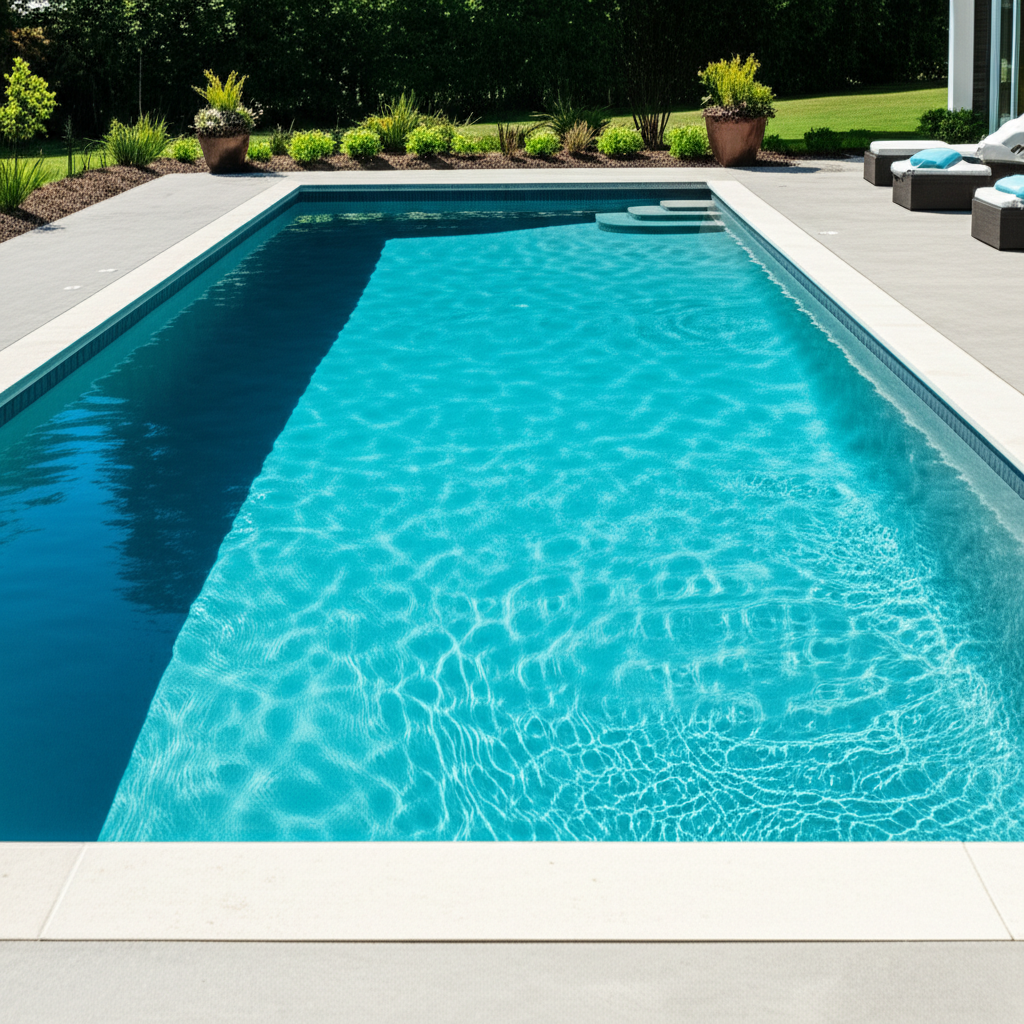- The Unmatched Appeal of a Custom Concrete Pool
- Smart Maintenance Strategies for Your Concrete Pool
- Essential Plaster Care for a Lasting Finish
- Beyond Plaster: Holistic Care for Your Concrete Pool
A Concrete Pool represents the pinnacle of backyard luxury, offering unparalleled design flexibility and robust durability that outshines many other pool types. Far from being a fleeting trend, these custom-built aquatic havens have long been admired for their ability to transform any outdoor space into a stunning oasis, tailored precisely to an owner’s vision. While some might harbor misconceptions about their upkeep, modern approaches to care combine with inherent structural integrity to deliver a truly rewarding ownership experience.
The Unmatched Appeal of a Custom Concrete Pool
The primary draw of a concrete installation lies in its boundless customization. Unlike pre-fabricated options, a concrete structure allows for virtually any shape, size, or depth imaginable. Want a freeform lagoon cascading into a waterfall? A sleek, geometric lap pool with an integrated spa? Perhaps a shallow tanning ledge for ultimate relaxation? A concrete design makes these dreams a reality. This flexibility extends to finishes as well, offering a spectrum of colors and textures from classic white plaster to aggregate, tile, or even painted surfaces that create unique visual effects. It’s this bespoke quality that allows a swimming area to integrate seamlessly with the existing landscape and architectural style of a home.
Furthermore, the strength and longevity of these pools are legendary. Constructed by spraying a concrete mixture (often referred to as a Gunite Pool when pneumatically applied) over a rebar framework, the resulting shell is incredibly dense and resilient. This robust construction means that a properly built and maintained concrete structure can last for many decades, often becoming a cherished part of a property for generations.
Smart Maintenance Strategies for Your Concrete Pool
While the term “effortless” might suggest a complete lack of attention, the truth is that concrete installations require smart and consistent maintenance rather than burdensome work. The key to ensuring its beauty and longevity lies in understanding a few fundamental principles. With today’s advanced filtration systems, automated cleaners, and expert advice, keeping your backyard jewel in pristine condition is more straightforward than ever before.
The most critical aspect of concrete upkeep revolves around its interior finish, typically plaster. Plaster Care is paramount, as the plaster is what gives your pool its smooth surface and characteristic blue hue. Regular attention to water chemistry prevents staining and etching, while proper cleaning keeps the surface free from debris and algae.
Essential Plaster Care for a Lasting Finish
The plaster finish of any concrete structure is generally a mixture of cement, marble dust, and water. Over time, plaster can be susceptible to issues if not properly maintained. Here’s how to keep it looking its best:
1. Maintain Balanced Water Chemistry: This is the golden rule. Incorrect pH, alkalinity, or calcium hardness levels can cause plaster to degrade, stain, or become rough. Regular testing (at least 2-3 times per week) and adjustment of chemicals are non-negotiable.
2. Regular Brushing: Even with a clean pool, tiny particles can settle on the plaster surface. Brushing the walls and floor, especially when the pool is new, helps to prevent mineral deposits and break up potential algae growth before it takes hold.
3. Vacuuming: Automated robotic cleaners or manual vacuuming will remove leaves, dirt, and other debris that can lead to staining or provide nutrients for algae. A clean pool means less strain on your filtration system and less risk of plaster damage.
4. Address Stains Promptly: If you notice discoloration, identify the type of stain (organic, metallic) and treat it quickly with appropriate stain removers suggested by a pool professional. Waiting too long can make stains much harder to remove.
5. Avoid Aggressive Chemicals: Use chemicals specifically designed for pool use and always add them according to manufacturer instructions, diluting them properly before adding them to the water. Concentrated chemicals can bleach or damage the plaster if applied directly.
6. Winterization (in cold climates): Proper winterization prevents freeze-thaw cycles from cracking plaster and tiles, protecting your investment during the colder months.
Beyond Plaster: Holistic Care for Your Concrete Pool
While plaster maintenance is central, a holistic approach to pool care includes other elements:
Filtration System: Ensure your pump and filter are running efficiently. A properly working filter removes impurities and keeps the water sparkling clear, reducing the workload on your chemicals. Backwash or clean your filter regularly.
Skimmer Baskets & Pump Pot: Regularly empty these to prevent blockages and maintain good water circulation.
Tile and Coping: Inspect the tiles and coping around the perimeter for loose or cracked sections. Repairing these promptly prevents further damage and keeps your pool looking pristine.
Professional Inspections: Consider periodic professional inspections. An experienced technician can spot potential issues early, perform necessary repairs, and ensure all systems are operating optimally.
A concrete installation, whether it’s a freeform design or a classic rectangle, offers an unmatched blend of aesthetic appeal and structural integrity. Embracing a proactive, rather than reactive, approach to maintenance ensures that your stunning custom pool remains a source of joy and relaxation for decades to come, proving that enduring beauty and manageable care can indeed go hand-in-hand.




